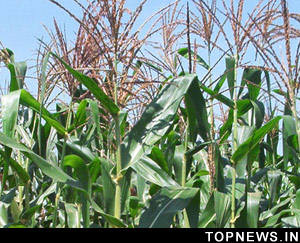Evidence indicates maize was domesticated 8,700 years ago in Mexico
 Washington, March 24: An international team of researchers has found the earliest physical evidence for domesticated maize in Mexico, dating back to at least 8,700 calendar years ago, which is 1,500 years earlier than previously documented.
Washington, March 24: An international team of researchers has found the earliest physical evidence for domesticated maize in Mexico, dating back to at least 8,700 calendar years ago, which is 1,500 years earlier than previously documented.
According to the researchers, the maize was probably domesticated by indigenous peoples in the lowland areas of southwestern Mexico, not the highland areas.
They place maize domestication in Mexico about 1,500 years earlier than previously documented there and 1,200 years earlier than the next earliest dated evidence for maize in Panama.
“Our primary goal was to document the early history of maize domestication in the homeland of its wild ancestor,” said Anthony Ranere, Department of Anthropology at Temple University, Philadelphia.
He acknowledged that the timelines make a good deal of sense because the wild ancestor of maize is native to the regions of southwestern Mexico where the team worked, and these regions had not been previously explored by archaeologists.
Researchers focused on the Xihuatoxtla Shelter in an area of the Balsas Valley that is home to a large, wild grass called Balsas teosinte that molecular biologists recently identified as the ancestor of maize.
The shelter contained early maize and squash remains as well as ancient stone tools used to grind and mill the plants.
“We found the remains of maize and squash in many contexts from the earliest occupation levels,” said Dolores Piperno, senior scientist and curator of archaeobotany and South American archaeology for the Smithsonian’s Museum of Natural History in Washington, D. C.
“This indicates these two crops were being routinely consumed nearly 9,000 years ago,” he added.
The findings suggest domestication of maize in Mexico’s lowland areas as opposed to highland areas as has long been thought. (ANI)